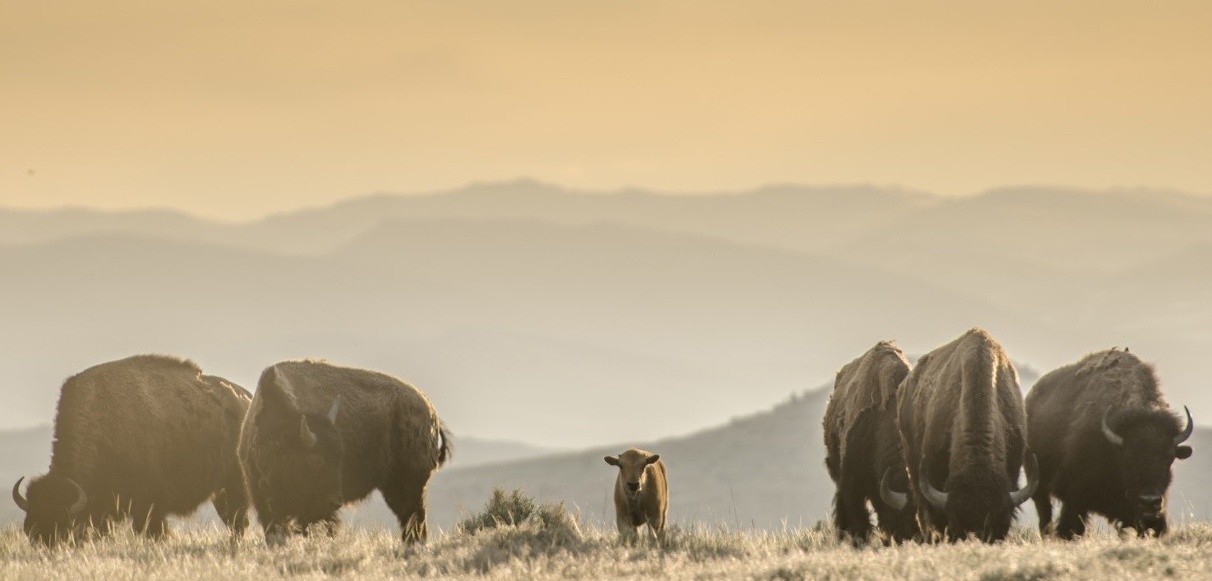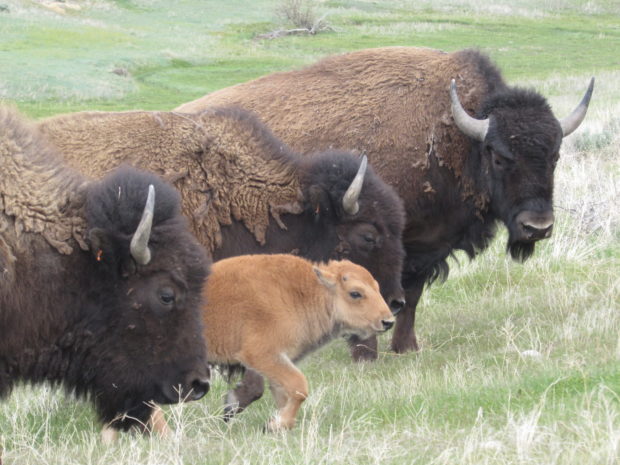We have much more to do and your continued support is needed now more than ever.
Buffalo Break New Trails on Wind River

On Saturday October 21, 2017, ten buffalo from the National Bison Range in Montana will become the second batch of animals to be released on Eastern Shoshone tribal lands on the Wind River Reservation in Wyoming. The release follows the restoration of ten buffalo to Wind River on November 3, 2016 (watch video and learn more about the effort here) and the birth of their first calf on May 3, 2017, 6 months to the day after buffalo first returned to the area after an absence of more than 130 years.
“Buffalo were the real trailmakers – trails you wouldn’t believe. They were as good as the best civil engineers. It remains true today.”
–David Love in John McPhee’s Annals of the Former World
As Jason Baldes, the representative for the Eastern Shoshone Tribe’s Boy-zshan Bi-den (Buffalo Return) program explains, the goal is to establish 1,000 buffalo as free-ranging on the reservation. “We’re really curious to see what the ecological changes are going to be over time because we know that buffalo, or bison, increase biodiversity as well as many other species such as amphibians and birds and arthropods, [and] bugs. And so we want to see what these changes are over time.”

Bison on the Wind River Reservation are being managed as a conservation herd. The National Wildlife Federation envisions using buffalo to establish multiple new herds on tribal lands across the West, with the goal of thousands of bison on hundreds of thousands of acres. Restoring bison to tribal lands and other lands across the country will not only restore wild bison as a species, but also restore a landscape, a habitat, one that supports a plethora of wildlife.
The return of the buffalo comes two weeks before the second annual commemoration of National Bison Day on November 2nd , celebrating bison as our national mammal. National Bison Day commemorates the deep and fundamental role buffalo play in our history, cultures, and ecology. Not only do buffalo hold a special place in our hearts and our minds, but they are a keystone species that signals the health of our wildlife and wild places. Just as buffalo are trailmakers as a species – that benefit other wildlife, plants and human communities – we seek to blaze new trails in bison conservation.
The return of bison to Wind River is the culmination of more than 40 years of collaboration by the Eastern Shoshone Tribe and National Wildlife Federation’s Tribal Partnership Program in conjunction with the U.S. Fish and Wildlife Service.





















